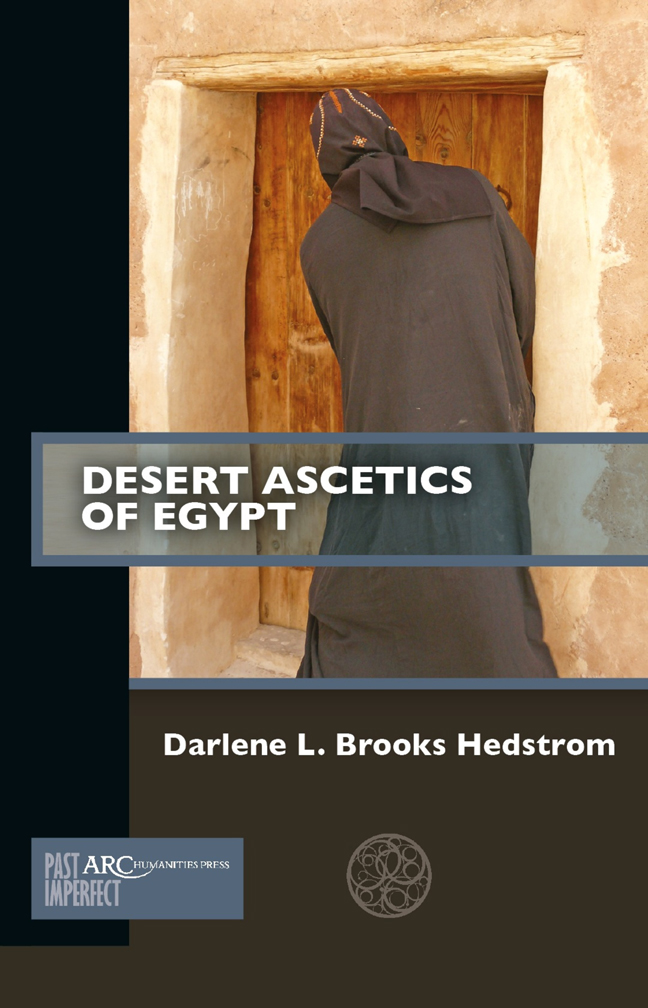Book contents
- Frontmatter
- Contents
- List of Illustrations
- Introduction: Travelling into the Desert
- Chapter 1 Desert Ascetics as Early Christian Celebrities
- Chapter 2 What Did the Desert Ascetics Teach and How Did They Live?
- Chapter 3 Who Was the First Desert Ascetic?
- Chapter 4 Monastic Literature, Letters, and Desert Ascetics
- Chapter 5 Archaeology of Early Egyptian Monasticism
- Chapter 6 Archaeology of Monastic Places
- Chapter 7 Monastic Archaeology and Monastic Things
- Conclusion: Reassembling a History of the Desert Ascetics of Egypt
- Further Reading
Chapter 2 - What Did the Desert Ascetics Teach and How Did They Live?
Published online by Cambridge University Press: 20 February 2024
- Frontmatter
- Contents
- List of Illustrations
- Introduction: Travelling into the Desert
- Chapter 1 Desert Ascetics as Early Christian Celebrities
- Chapter 2 What Did the Desert Ascetics Teach and How Did They Live?
- Chapter 3 Who Was the First Desert Ascetic?
- Chapter 4 Monastic Literature, Letters, and Desert Ascetics
- Chapter 5 Archaeology of Early Egyptian Monasticism
- Chapter 6 Archaeology of Monastic Places
- Chapter 7 Monastic Archaeology and Monastic Things
- Conclusion: Reassembling a History of the Desert Ascetics of Egypt
- Further Reading
Summary
The Desert Ascetics became the modern pop stars of their day. Christians from around the Eastern Mediterranean wanted to meet these extraordinary Christians and see if everything about them was true. They wanted to discover what blessings or miracles could be achieved by being near the living angels of God. In the end, the solitude monks desired was replaced by the noise of larger monastic communities and a stream of visitors: local and foreign, monastic and nonmonastic. The world, with all its entanglements, came to the desert, and the boundaries between an idealized desert utopia and the noisy world started to fade. But, the memories of the Desert Ascetics remained, as did the questions about them. Who were they? What did they teach? How did they live? How could they help other Christians?
In this chapter, I use the late fifth- and early sixth-century collections of the Sayings of the Desert Fathers and Mothers as a starting point to sketch out the identity of the Desert Ascetics. The stories in the Sayings were written down at least one hundred to one hundred and fifty years after the lives of the individuals they purport to describe. The Sayings are not eyewitness accounts of the first Desert Fathers and Mothers but are later accounts of the first generations of desert monasticism. While some scholars in the past have explored how the Sayings reflect and retain the oral tradition and oral histories of fourth-century Egyptian monasticism, I adopt the more moderate view that the Sayings reflect the world of the later generations of the fifth and sixth-century monks rather than serving as a window into the fourth century. Even with a conservative view of the historicity of the Sayings, we can still learn a great deal about how later generations reflected upon and constructed a history of desert monks and the deserts in which they lived.
What Are the Sayings?
The Sayings exist largely in three main collections. The first, the Alphabetical collection, comprises a series of stories organized by the names of the monks in alphabetical order, running from Antony to Zeno. The second collection is the Systematic collection, in which stories are arranged by topics, such as self-control, humility, discretion, and a state of calm or profound peace known in Greek as hēsychia.
- Type
- Chapter
- Information
- Desert Ascetics of Egypt , pp. 29 - 42Publisher: Amsterdam University PressPrint publication year: 2023

